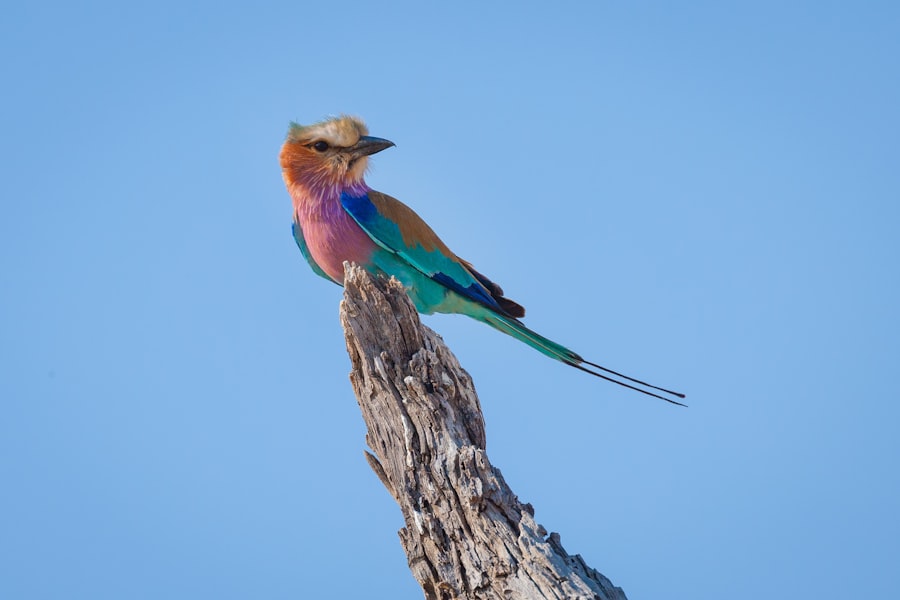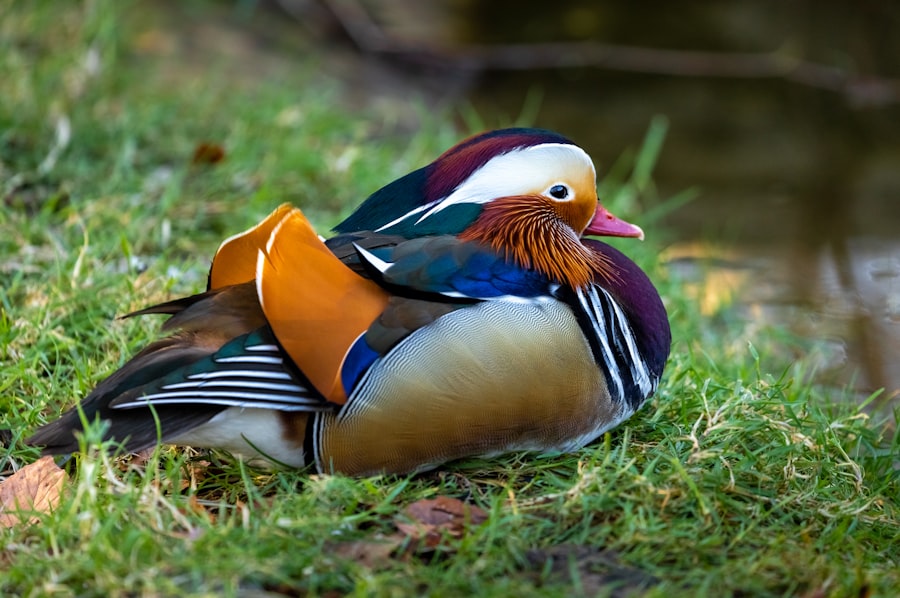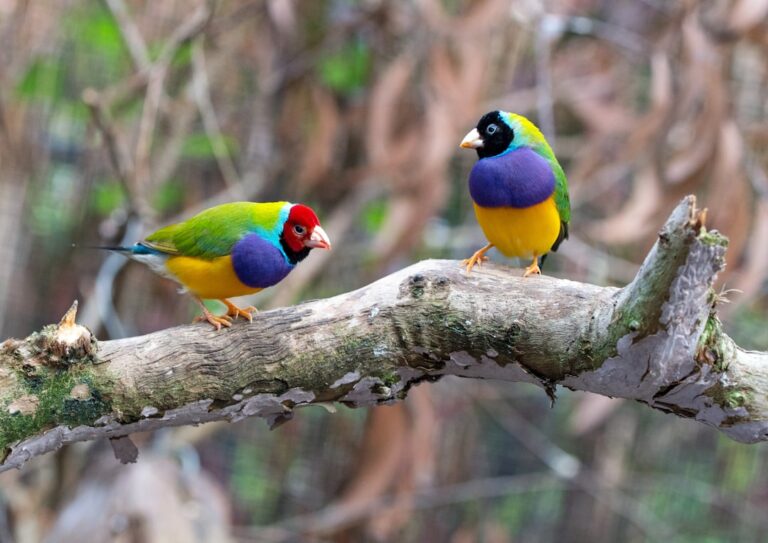Mosaic canaries are a captivating variety of canaries that have garnered attention for their striking appearance and unique genetic makeup. These birds are not only visually appealing but also possess a rich history that intertwines with the broader narrative of canary breeding. The term “mosaic” refers to the distinct patterning of colors and markings on their feathers, which can vary significantly from one bird to another.
This diversity in appearance is a result of selective breeding practices that have been refined over generations, making mosaic canaries a popular choice among avian enthusiasts and breeders alike. The allure of mosaic canaries extends beyond their aesthetic qualities; they are also known for their melodious songs and lively personalities. These birds are often characterized by their sociable nature, making them excellent companions for both novice and experienced bird keepers.
As a result, mosaic canaries have become a staple in many aviaries, where they are appreciated not only for their beauty but also for their engaging behaviors. Understanding the intricacies of mosaic canaries, from their historical roots to their care requirements, is essential for anyone looking to add these remarkable birds to their collection.
History and Origin of Mosaic Canaries
The Emergence of the Mosaic Canary
The emergence of the mosaic canary as a distinct variety can be traced back to the 20th century when breeders started experimenting with crossbreeding techniques to create birds with unique feather patterns.
The Characteristics of Mosaic Canaries
The term “mosaic” itself reflects the intricate patterns that result from the combination of different color genes. Breeders sought to create birds that displayed a patchwork of colors, often combining elements from various canary breeds. This selective breeding led to the establishment of the mosaic canary as a recognized variety within the larger classification of canaries.
Recognition and Popularity
The first official recognition of mosaic canaries occurred in the mid-20th century, when they began to be showcased in avian exhibitions and competitions, further solidifying their status among avian enthusiasts.
Characteristics and Physical Appearance of Mosaic Canaries

Mosaic canaries are renowned for their vibrant and varied plumage, which is one of their most distinguishing features. The coloration of these birds can range from bright yellows and oranges to deep reds and even whites, often interspersed with contrasting patches that create a visually stunning effect. The patterns on their feathers are not uniform; instead, they exhibit a unique mosaic-like quality that makes each bird one-of-a-kind.
This diversity in appearance is largely due to the genetic variations that influence feather color and patterning. In addition to their striking coloration, mosaic canaries typically possess a well-proportioned body structure. They have a rounded head, a short neck, and a compact body that contributes to their overall charm.
Their beaks are conical and strong, adapted for seed consumption, while their legs are sturdy enough to support their active lifestyle. The combination of these physical traits not only enhances their beauty but also plays a role in their ability to thrive in various environments, whether in an aviary or as a pet in a home setting.
Care and Maintenance of Mosaic Canaries
| Aspect | Details |
|---|---|
| Feeding | Provide a balanced diet of seeds, pellets, fresh fruits, and vegetables. |
| Cage Size | Provide a spacious cage with room for flying and exercise. |
| Grooming | Regularly trim nails and wings if necessary. |
| Bathing | Provide a shallow dish for bathing or mist the bird with water. |
| Healthcare | Regularly schedule check-ups with an avian veterinarian. |
Caring for mosaic canaries requires an understanding of their specific needs and preferences. These birds thrive in environments that mimic their natural habitat, which includes ample space for flying and exploring. A spacious aviary or cage is essential, as it allows them to exercise and engage in natural behaviors.
Ideally, the enclosure should be equipped with perches at varying heights, toys for mental stimulation, and areas where they can hide or seek refuge when feeling stressed. Diet is another critical aspect of care for mosaic canaries. A balanced diet should consist primarily of high-quality seed mixes formulated specifically for canaries, supplemented with fresh fruits and vegetables.
Foods such as leafy greens, carrots, and apples provide essential vitamins and minerals that contribute to their overall health. Additionally, providing cuttlebone or mineral blocks is important for maintaining beak health and ensuring that they receive adequate calcium. Regular monitoring of their diet and health is crucial; any changes in behavior or appearance should prompt a visit to an avian veterinarian.
Breeding and Genetics of Mosaic Canaries
Breeding mosaic canaries involves a deep understanding of genetics and color inheritance patterns. The unique feather patterns seen in mosaic canaries arise from specific genetic combinations that breeders carefully select for during mating. The primary genes involved in determining color and pattern include the dominant white gene and various color genes that influence pigmentation.
Breeders often utilize these genetic principles to produce offspring with desired traits while maintaining genetic diversity within their breeding stock. When planning a breeding program for mosaic canaries, it is essential to consider not only the visual traits but also the health and temperament of the parent birds. Selecting healthy individuals with good lineage helps ensure that the offspring inherit desirable characteristics while minimizing the risk of genetic disorders.
Breeding practices may involve pairing mosaics with other color varieties or even different breeds to introduce new traits or enhance existing ones. This careful approach allows breeders to create stunning new variations while preserving the integrity of the mosaic lineage.
Mosaic Canaries as a Valuable Addition to Your Aviary

Socialization and Companionship
Their lively interactions can create a dynamic atmosphere within an aviary, encouraging socialization among different species. Moreover, mosaic canaries serve as excellent companions due to their melodious songs. While not as loud or complex as some other songbirds, their sweet chirps and trills add a pleasant auditory backdrop to any environment.
Enhancing the Bird-Keeping Experience
This musical quality enhances the overall experience of keeping birds, providing joy and entertainment for both owners and visitors alike. Additionally, the presence of mosaic canaries can inspire interest in aviculture among newcomers, fostering a community of bird enthusiasts who appreciate the beauty and diversity of these remarkable creatures.
A Cherished Addition to Aviaries
In conclusion, mosaic canaries represent a fascinating blend of history, genetics, and care requirements that make them an appealing choice for bird lovers. Their unique appearance, coupled with their engaging personalities and melodious songs, ensures that they remain a cherished addition to aviaries around the world. Understanding the intricacies of these birds—from their origins to their care—enables enthusiasts to appreciate them fully and contribute positively to their well-being in captivity.








